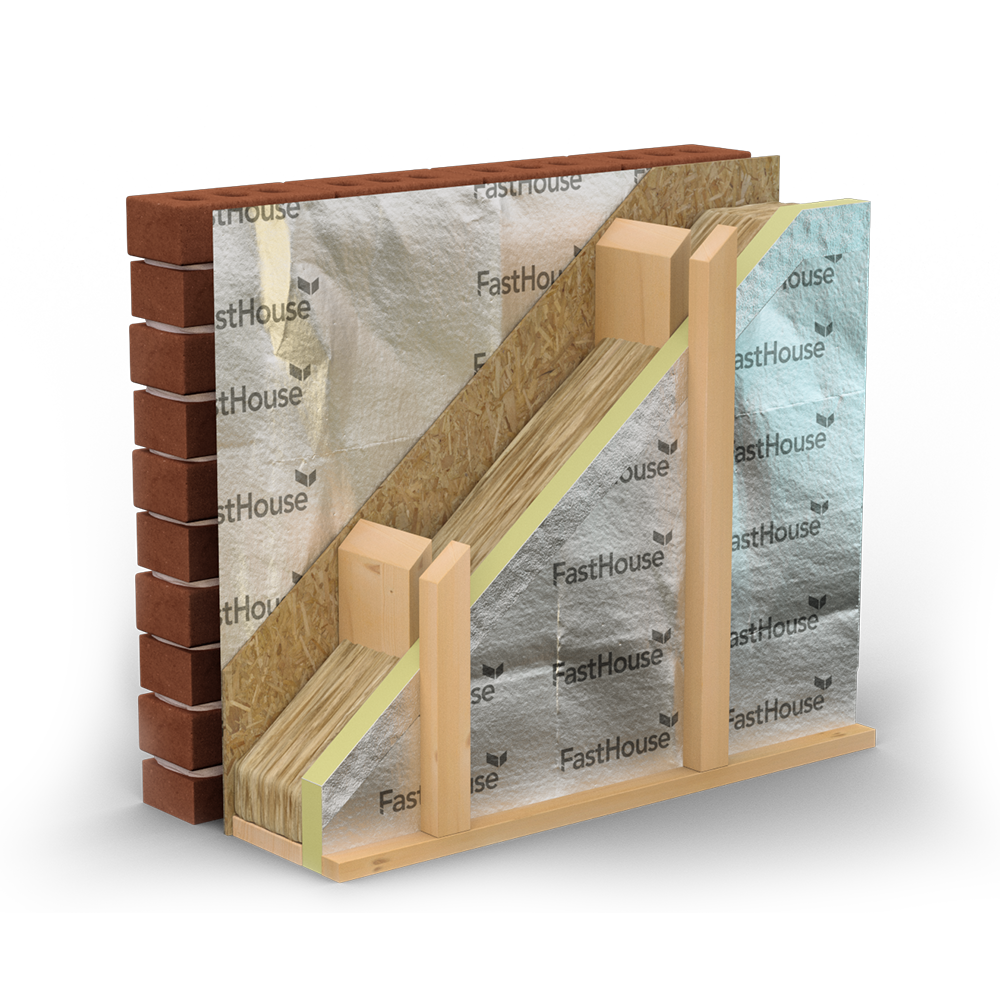
Fasthouse External Wall
Fire ratings of 1 or 1.5 hours to external load bearing timber framed walls; and • Can extend existing buildings to boundary and meet BCA required fire resistance rating. Description. This manual describes the Boral Plasterboard Out. RWALL™ exterior wall system for use as fire rated exterior walls in residential buildings using timber framing.

[DIAGRAM] Arterial Wall Diagram
The interior and exterior plaster layers make straw-bale walls fairly airtight. Image Credits: Gary Williamson/Fine Homebuilding #131 Natural materials like straw and adobe perform well. Natural walls includes both old and new materials: straw bale, rammed earth, and adobe. Alternative walls are low-tech and rely on the use of.
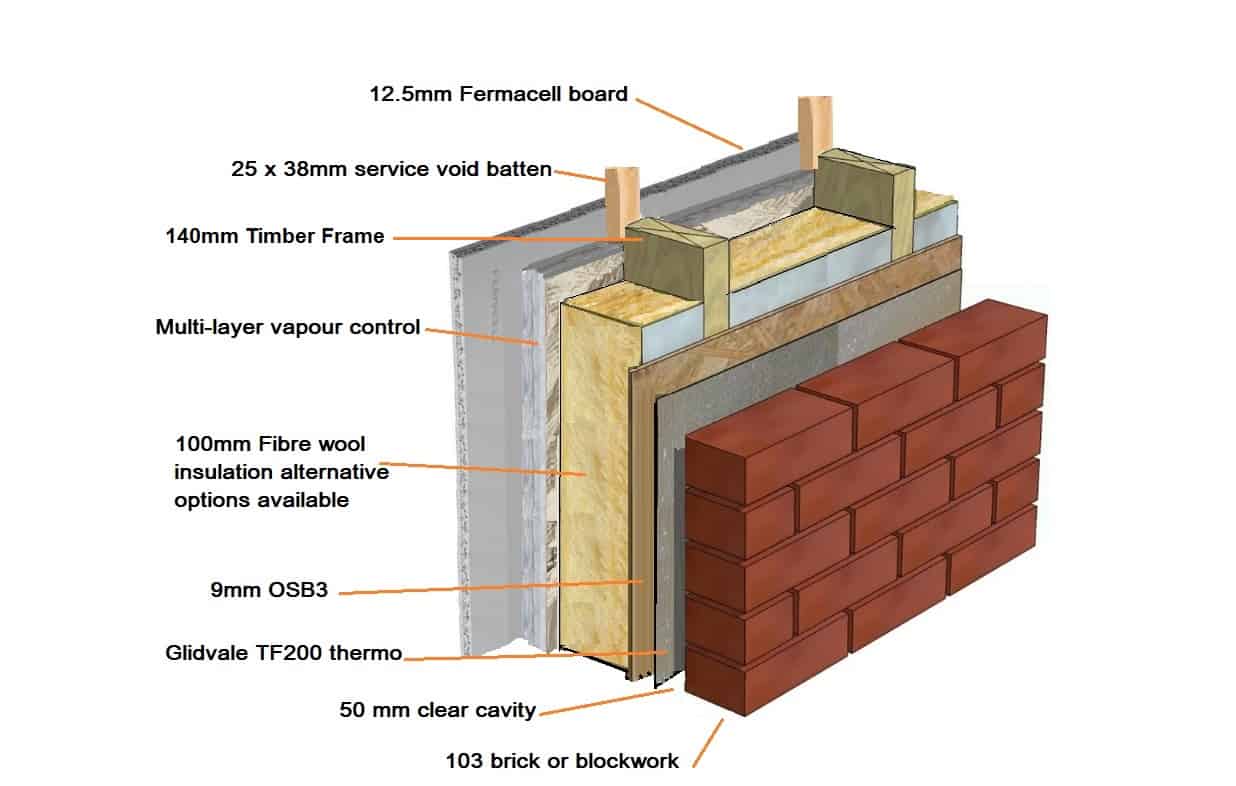
About timber frame buildings and extensions
Here are some examples of material layers for external walls: monolayer; insulated externally; insulated internally; cavity walls; dry or prefabricated; ventilated facades. In addition, it is also possible to have stratigraphies that derive from a combination of types, such as, for example, externally insulated cavity walls.
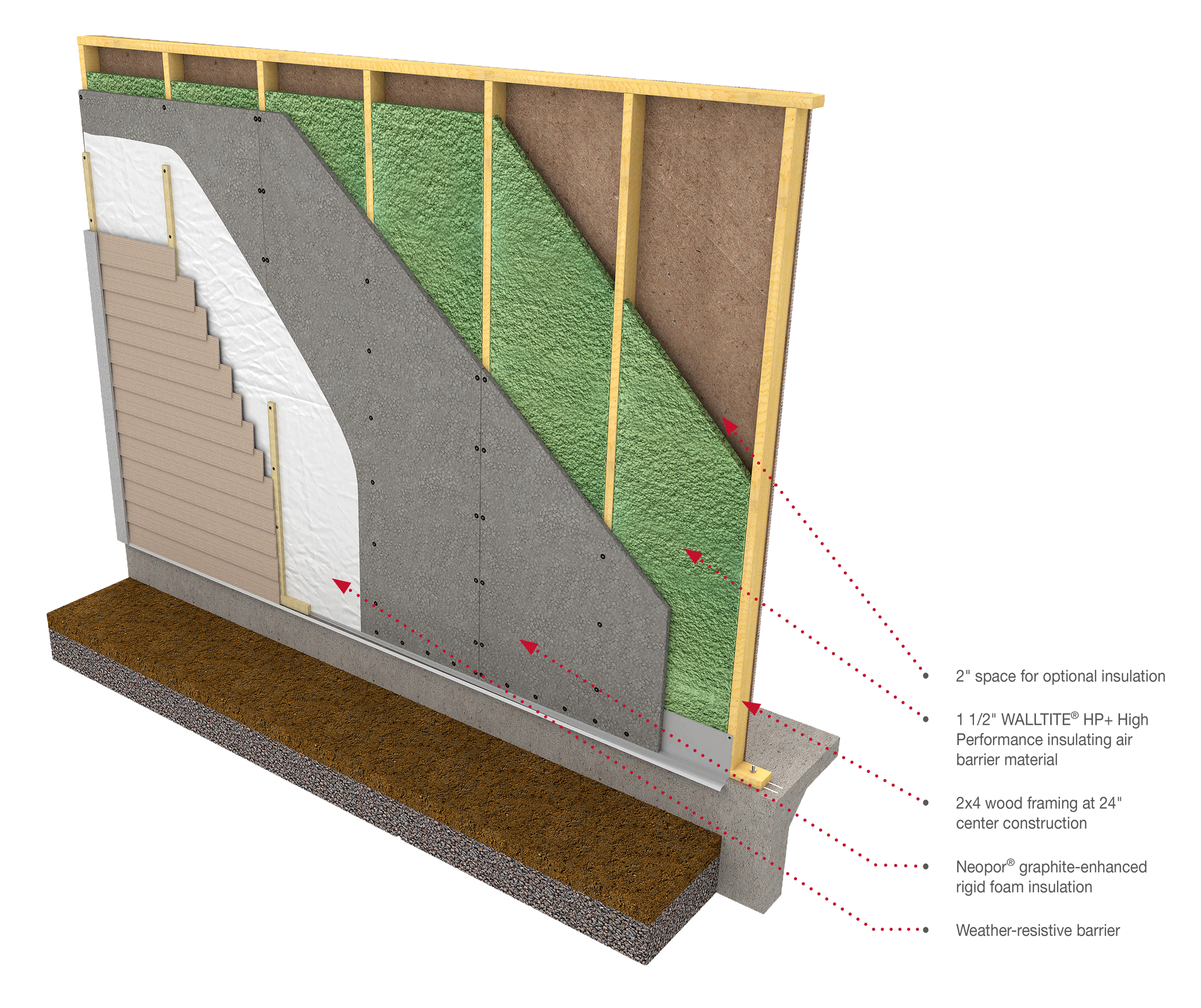
New Wall Assembly Combines Advanced Framing with Superior Insulation
What Is Exterior Wall Sheathing For and How Does It Work? Exterior wall sheathing actually has a few different purposes, depending on the type of sheathing you're using. Structural sheathing is first and foremost designed to help strengthen the walls of the home or building it's installed on.

The example of the architectural wall that has four material layers and
An external wall insulation system (or EWIS) is a thermally insulated, protective, and decorative exterior cladding procedure involving the use of expanded polystyrene,. Two coloured layers of polymer-modified external cementitious render are applied in 3 to 4 millimetres (0.12 to 0.16 in) layers onto a specified backing..

External Brick Wall Insulation. House Brick Wall Insualtion with Glue
Lightweight floor frames can support internal and external wall, floor, and roof loads on low-impact footing systems.. Treatment may be on the outer layer only, or through the full cross-section. LOSP is unsuitable for in-ground applications. Copper azole is an effective alternative preservative, fungicide and insecticide suitable for H1.

Layers, layers, layers John Fowler Flickr
Single stud walls have one layer of framing—the internal cladding (such as plasterboard) is attached to the inside of the frame and the external cladding (such as weatherboard, fibre-cement or brick, as used in brick veneer, see later) is attached to the outside.

DesignBox Architecture The wall
Exterior walls are the part of a building that faces the outside. They form an enclosure around the inside of your home and protect it from harsh weather conditions. Excient walls can be made from a variety of materials and in many different styles. What is Exterior Wall Construction

How to install external wall insulation Insulation Superstore Help
Aluminium, glass, wood, vinyl, bricks, and steel can be used. The choice depends on the kind of cladding, the material properties, and the budget available. Its main purposes are to serve as a protective layer against the weather, an insulation system, and an aesthetic system for enhancing the building's appearance.

Three layers of rock wool A detail of the doublestud wall assembly
1 form, 3 quotes: Fast, Easy, Free! Top 10 Local Bricklayers. We are Australia's largest platform to hire tradies.
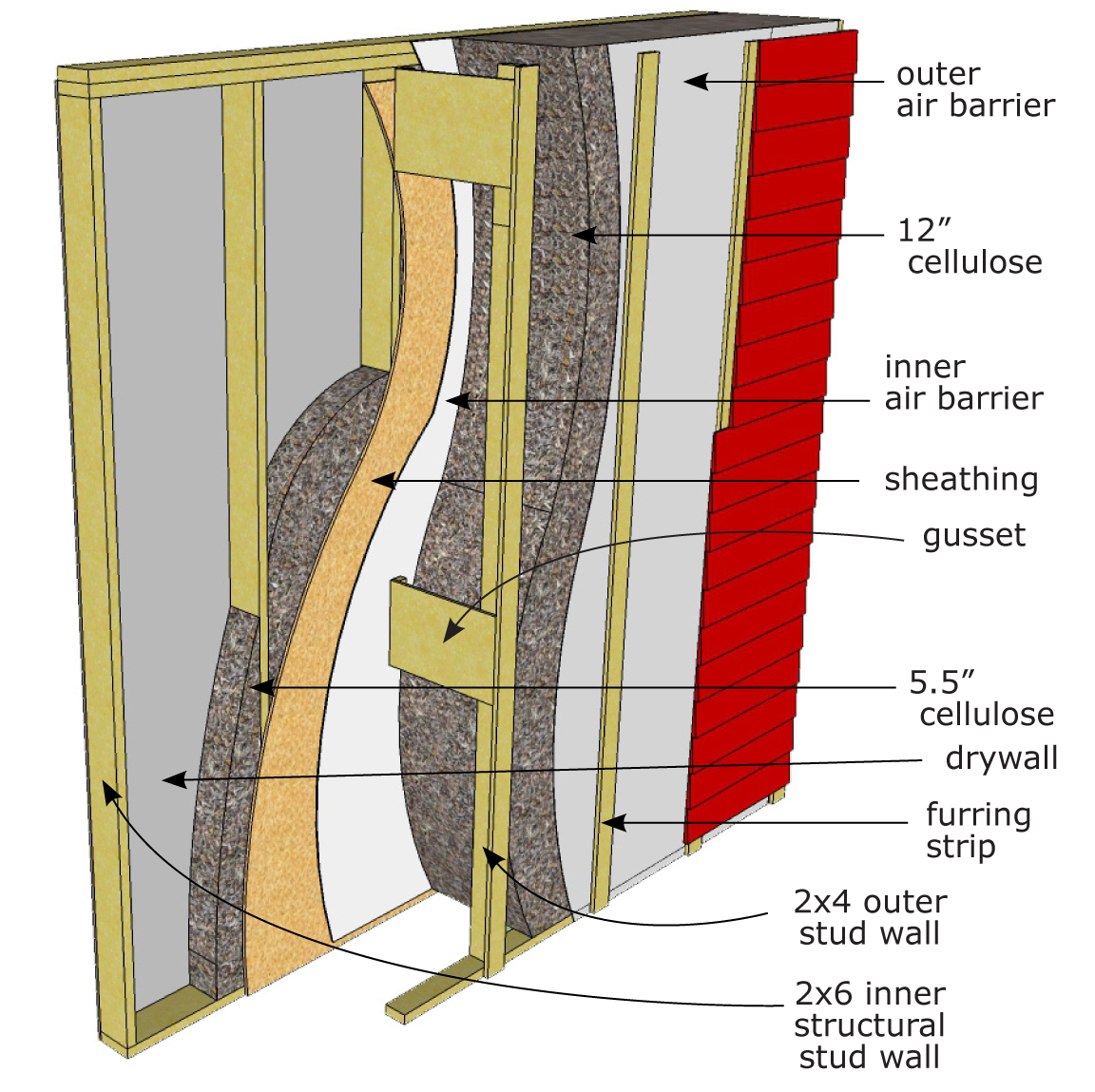
cold climate housing research center Page 2 Making Houses Work
Batt Insulation. Batt insulation is one of the most common types of insulation used in wood-framed walls. It usually comes in pre-cut panels and is made from fiberglass, rock wool, or natural fibers like cotton. Typical R-value: For fiberglass batts, R-values usually range from R-3 to R-4 per inch. A 3.5-inch thick batt (typical for a 2x4 stud.
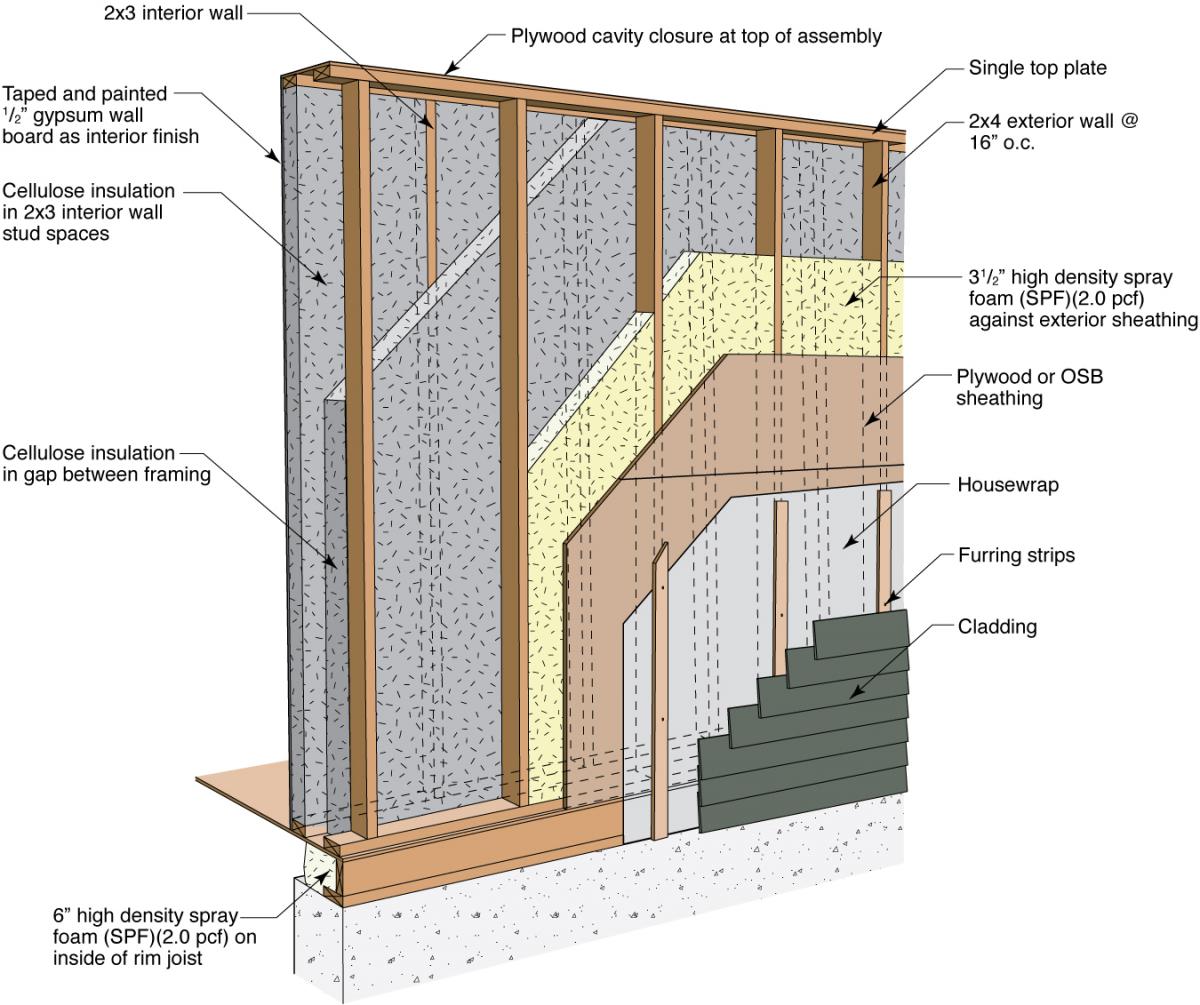
DoubleStud Wall Framing Building America Solution Center
Cross-laminated timber (CLT) - This is built in a similar way to plywood: 15-25mm thick layers of timber are laid with alternate layers at 90° to each other, forming panels from 90mm to 300mm thick. These can be used for floors, walls and roof structure, but always require weather protection and waterproofing.

Various Types Of Walls
Pressed Tin Wall Panels. Huge Range of Styles. Best Deals. Call & Order Yours Today! Stylish Pressed Tin Panels. Splashbacks, Cornice, Ceiling & Wall Panels. Enquire Today!

Five Rules for Wall Design GreenBuildingAdvisor
Typical wall layers (exterior wall). Diagram: Anatomy of a Wall Wall Surface The uppermost section of the wall diagram above illustrates the different parts of the surface of an interior wall which is mostly decorative trim, stiles and rails. Stud Wall with Window (aka Framed Wall) The middle section above illustrations a framed or stud wall.
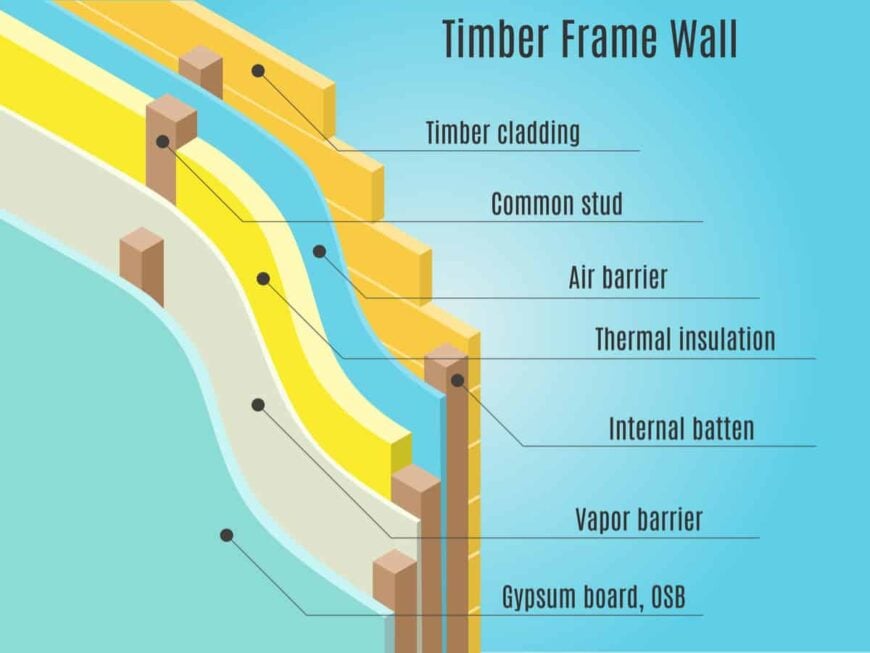
12 Different Types of Walls Do you know them all?
Breeze blocks / besser blocks Known by many names, these types of bricks are easy to build with and are very commonly used to make building walls in Australia. Metal cladding Metal cladding is strong and weather resistant, and offers a very wide range of decorative and design choices for a home's exterior. Advertisement Stone cladding

ProofTherm External Wall Insulating Render ProofShield
A damp-proof course (or DPC) is a barrier made of plastic or bituminous aluminium sheeting, which goes all the way through the bricks. The damp-proof course is designed to prevent moisture from entering the building. In homes with a timber subfloor, the DPC is normally put in two courses (i.e. two rows of bricks) below the lowest timber member.